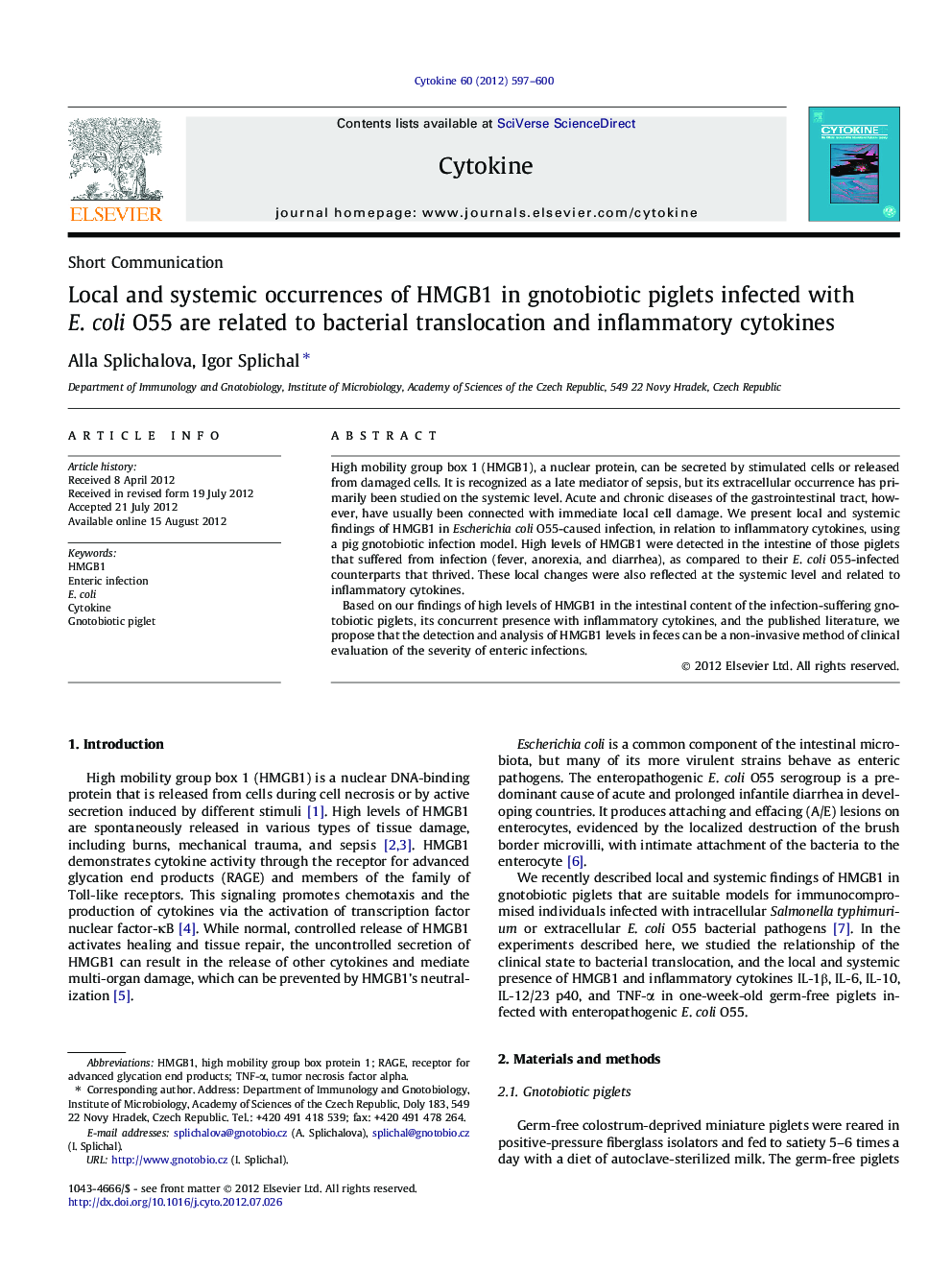| Article ID | Journal | Published Year | Pages | File Type |
|---|---|---|---|---|
| 5897295 | Cytokine | 2012 | 4 Pages |
High mobility group box 1 (HMGB1), a nuclear protein, can be secreted by stimulated cells or released from damaged cells. It is recognized as a late mediator of sepsis, but its extracellular occurrence has primarily been studied on the systemic level. Acute and chronic diseases of the gastrointestinal tract, however, have usually been connected with immediate local cell damage. We present local and systemic findings of HMGB1 in Escherichia coli O55-caused infection, in relation to inflammatory cytokines, using a pig gnotobiotic infection model. High levels of HMGB1 were detected in the intestine of those piglets that suffered from infection (fever, anorexia, and diarrhea), as compared to their E. coli 055-infected counterparts that thrived. These local changes were also reflected at the systemic level and related to inflammatory cytokines.Based on our findings of high levels of HMGB1 in the intestinal content of the infection-suffering gnotobiotic piglets, its concurrent presence with inflammatory cytokines, and the published literature, we propose that the detection and analysis of HMGB1 levels in feces can be a non-invasive method of clinical evaluation of the severity of enteric infections.
⺠HMGB1 release is related to bacterial translocation in the pig gnotobiotic model. ⺠The piglets suffering from the infection showed high levels of HMGB1. ⺠Intestinal HMGB1 levels are related to systemic HMGB1 levels. ⺠Local and systemic HMGB1 levels are related to inflammatory cytokines. ⺠Fecal HMGB1 levels could inform clinical evaluation of enteric infections.
